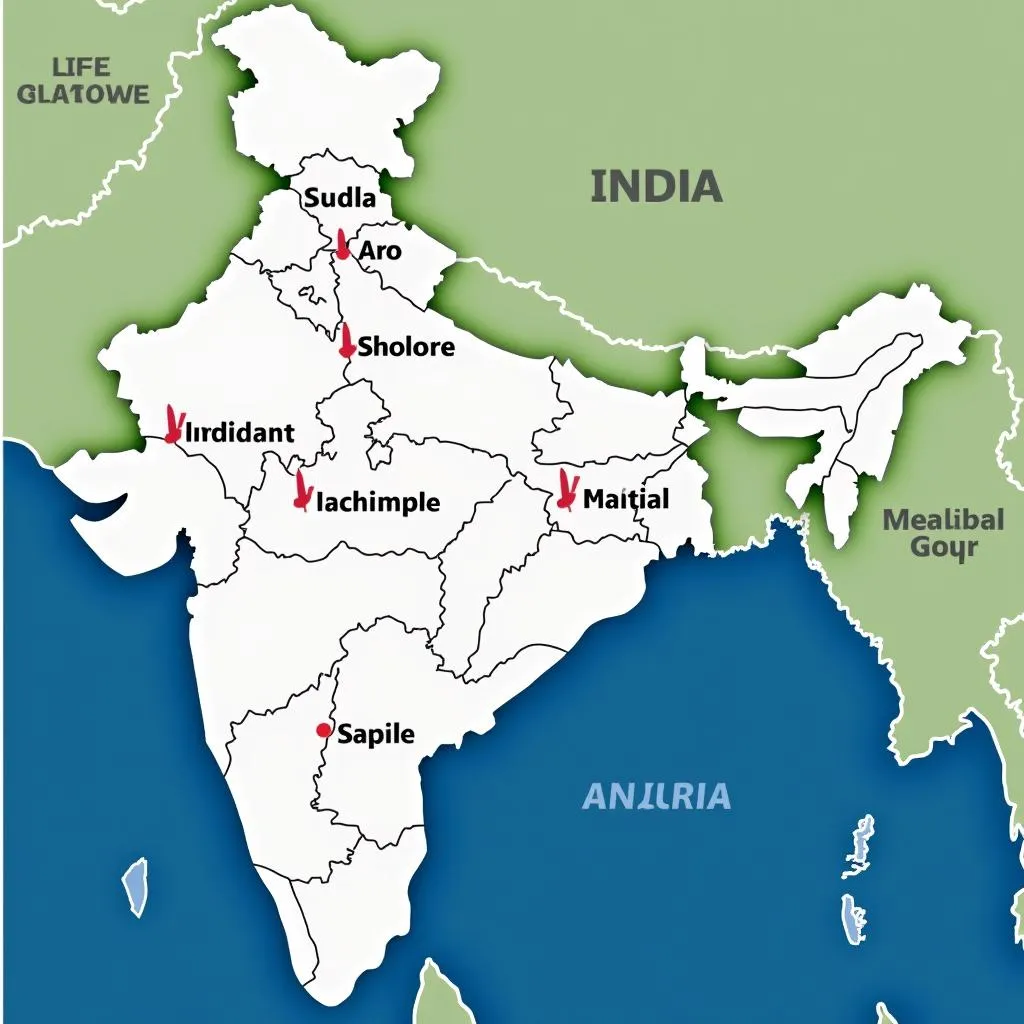The Indian aviation sector is witnessing a significant transformation, with Adani Group, a conglomerate with interests spanning across diverse industries, emerging as a dominant player in the airport infrastructure space. The phrase “Airports Under Adani” has become synonymous with modernization, expansion, and a new era of passenger experience in India.
Adani Group’s Entry into the Aviation Sector
While relatively new to the aviation sector, Adani Group’s foray has been nothing short of remarkable. Their strategy involved acquiring existing airports through privatization initiatives launched by the Indian government. This strategic move has allowed Adani Group to quickly establish a strong foothold in the rapidly growing Indian aviation market.
A Look at the Airports Under Adani’s Management
Currently, Adani Group manages seven airports across India, strategically located in key cities and regions:
- Sardar Vallabhbhai Patel International Airport, Ahmedabad (AMD)
- Lokpriya Gopinath Bordoloi International Airport, Guwahati (GAU)
- Jaipur International Airport (JAI)
- Mangaluru International Airport (IXE)
- Chhatrapati Shivaji Maharaj International Airport, Mumbai (BOM)
- Thiruvananthapuram International Airport (TRV)
- newly acquired assets
 Map of Airports Managed by Adani Group
Map of Airports Managed by Adani Group
This diverse portfolio reflects Adani’s ambition to cater to a wide range of travelers and cargo operations. From major international hubs like Mumbai Airport to crucial regional airports like Guwahati and Ahmedabad, Adani Group’s presence is transforming the Indian aviation landscape.
The Impact of Adani’s Management
The acquisition of these airports by Adani Group has ushered in a wave of changes. Significant investments have been directed towards:
- Infrastructure Enhancement: Upgrading terminals, runways, and air traffic control systems.
- Passenger Experience: Improving amenities, introducing digital solutions, and enhancing overall customer service.
- Cargo Handling: Modernizing cargo terminals and streamlining logistics to boost air freight operations.
These efforts have resulted in tangible improvements, including reduced waiting times, smoother passenger flow, and enhanced airport efficiency.
Challenges and Opportunities
While Adani’s entry has brought about positive changes, challenges remain:
- Competition: The Indian aviation sector is highly competitive, with established players vying for market share.
- Regulatory Environment: Navigating the complex regulatory framework of the Indian aviation industry presents ongoing challenges.
- Sustainability Concerns: Balancing growth with environmental sustainability is crucial for long-term success.
Despite these challenges, Adani Group’s commitment to innovation, coupled with the projected growth of the Indian aviation market, presents significant opportunities. The group is well-positioned to capitalize on the rising demand for air travel and establish itself as a global leader in airport management.
 Modernized Airport Terminal Under Adani Management
Modernized Airport Terminal Under Adani Management
The Future of Airports Under Adani
Adani Group’s ambitious plans for the future include:
- Further Acquisitions: The group continues to actively pursue opportunities to acquire more airports in India and internationally.
- Technology Integration: Adani is at the forefront of integrating cutting-edge technologies like AI and data analytics to optimize airport operations and enhance security.
- Sustainable Practices: The group is committed to implementing environmentally friendly practices and reducing the carbon footprint of its airport operations.
With a clear vision for growth and a focus on innovation, Adani Group is poised to play a pivotal role in shaping the future of Indian aviation. Their commitment to modernizing airport infrastructure, enhancing passenger experience, and driving sustainable practices will likely contribute to India’s emergence as a global aviation hub.
Conclusion
“Airports under Adani” signifies more than just a change in ownership; it represents a paradigm shift in the Indian aviation sector. As Adani Group continues to expand its footprint, it brings with it a commitment to excellence, innovation, and a passenger-centric approach. This focus on continuous improvement is not only transforming the experience of air travel in India but also setting new benchmarks for the global aviation industry. The rise of Adani in this sector is a testament to India’s growing economic prowess and its potential to become a leading force in the global aviation landscape.
For those interested in learning more about the impact of Adani Group on specific airports, you can find detailed information on our website, including insights into the Mumbai Airport Adani acquisition and its implications. We also have an article highlighting the recent acquisition of 5 airports by Adani, which further solidifies their dominant position in the Indian aviation market. For those aspiring to be a part of this dynamic industry, our resource on BBA in Airport Management colleges in India can provide valuable guidance.

